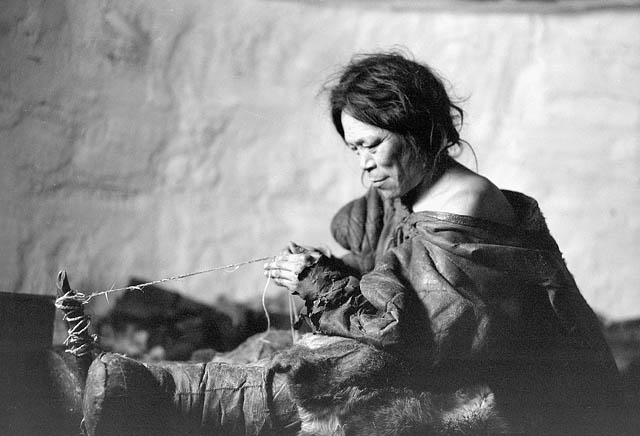What is Babiche?
Made from rawhide (often elk or deer), babiche is a durable type of string or cord used to weave or lace various objects, such as canoe seats, harpoon lines, bowstrings, lacrosse rackets, tumplines and headbands. Bags of fine workmanship were also knit of babiche. Braided babiche was used in making halters and carrying straps. Babiche was therefore a versatile and durable tool used frequently by Indigenous peoples, especially in the era before colonization.
How was Babiche Made?
Indigenous women made babiche by first cleaning and removing the hairs and flesh of an animal hide through a soaking process. They then stretched the hide until it dried and cut it into long, narrow strips. These strips were the babiche. Depending on the type of animal hide, such as whether it was a land or aquatic animal, the thickness, colour and strength of the babiche varied. Sinew and tendon could also be used to make babiche.
Modern Uses of Babiche
Babiche is still used to weave and lace certain objects. However, modern, synthetic cords are more common in the construction of items such as snowshoes and nets. Babiche remains a skilled craft, one that is passed down to new generations in some communities.

 Share on Facebook
Share on Facebook Share on X
Share on X Share by Email
Share by Email Share on Google Classroom
Share on Google Classroom

